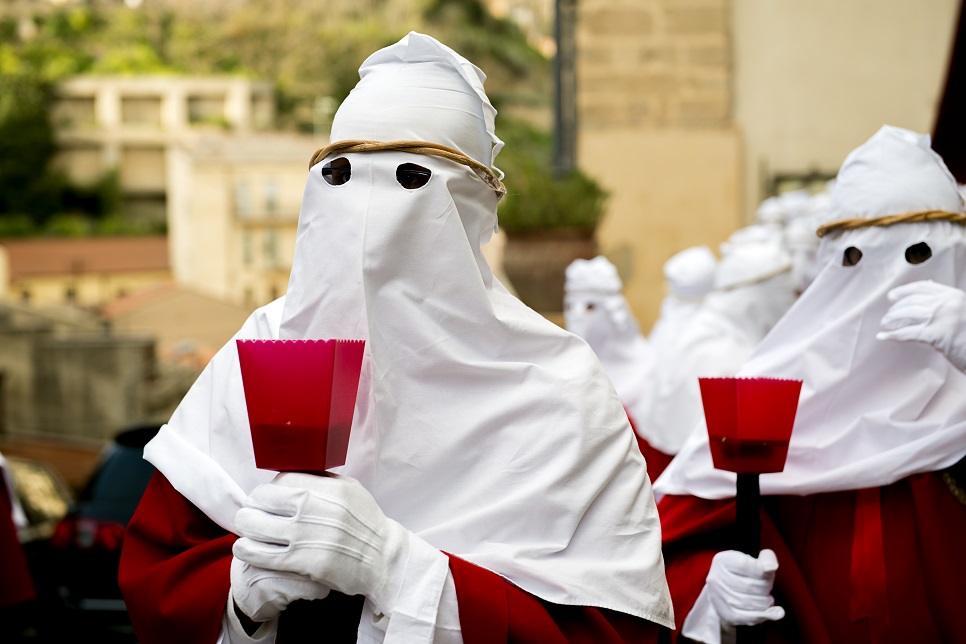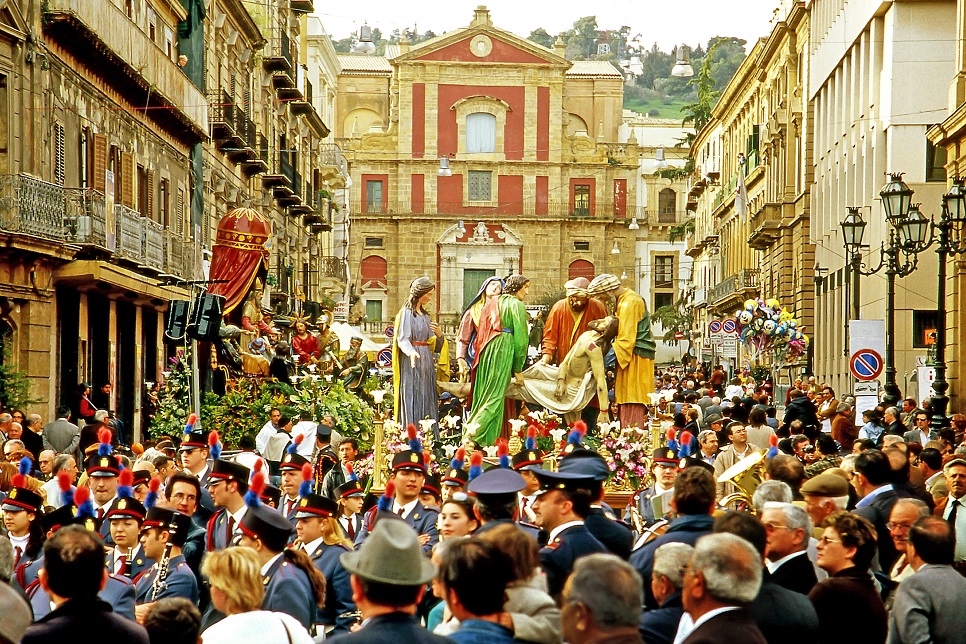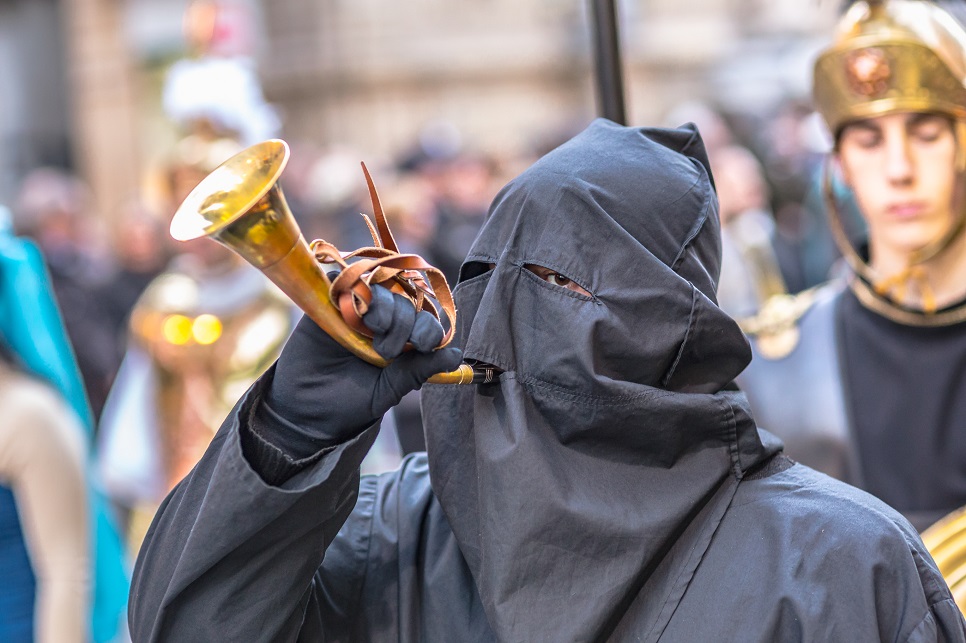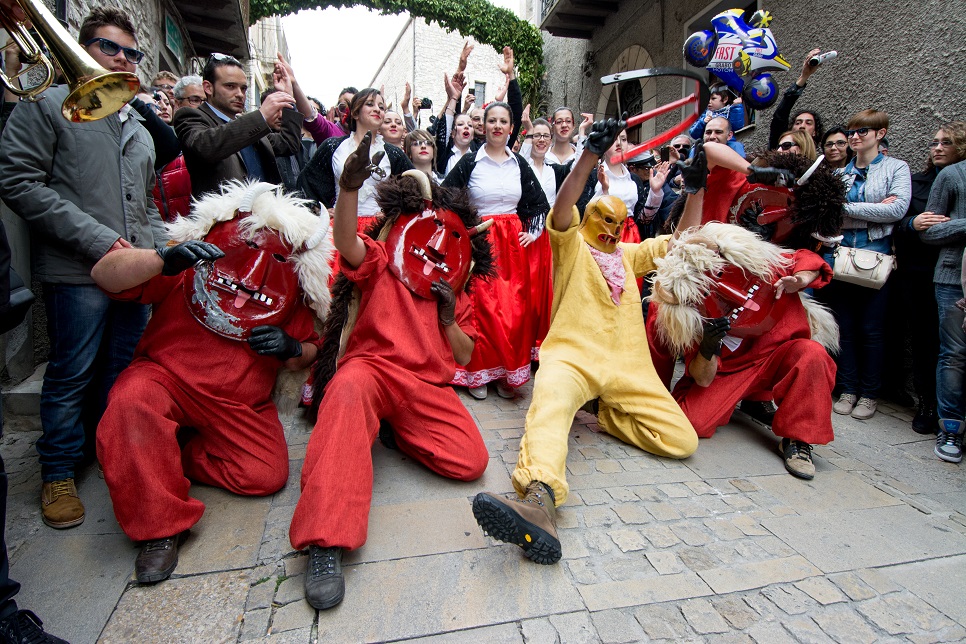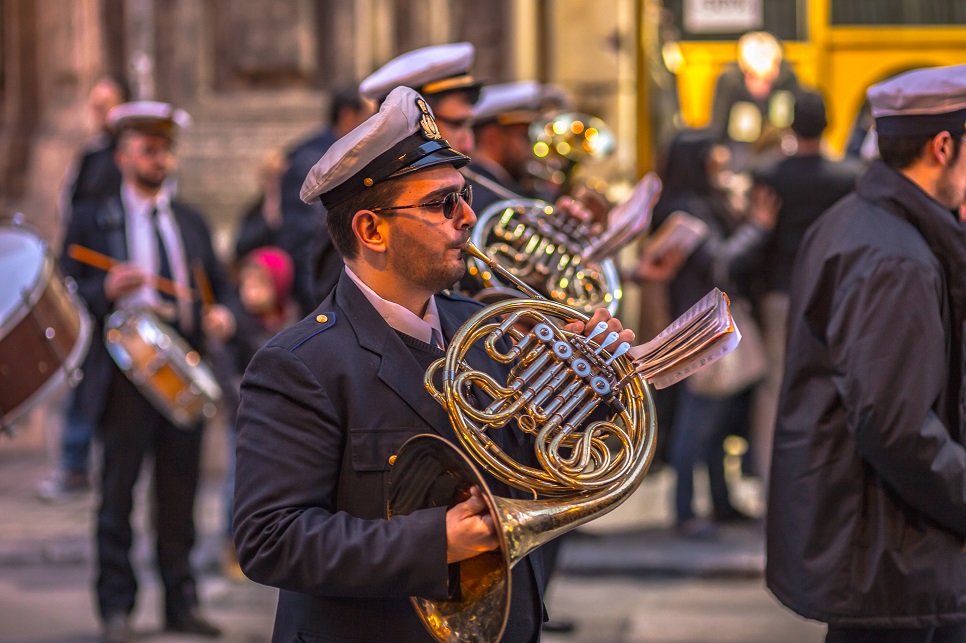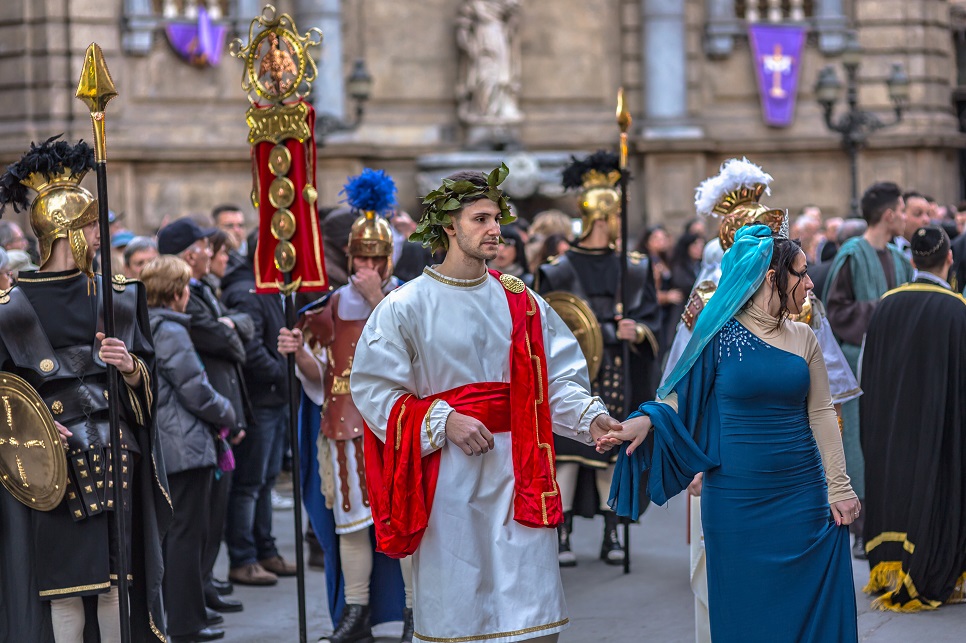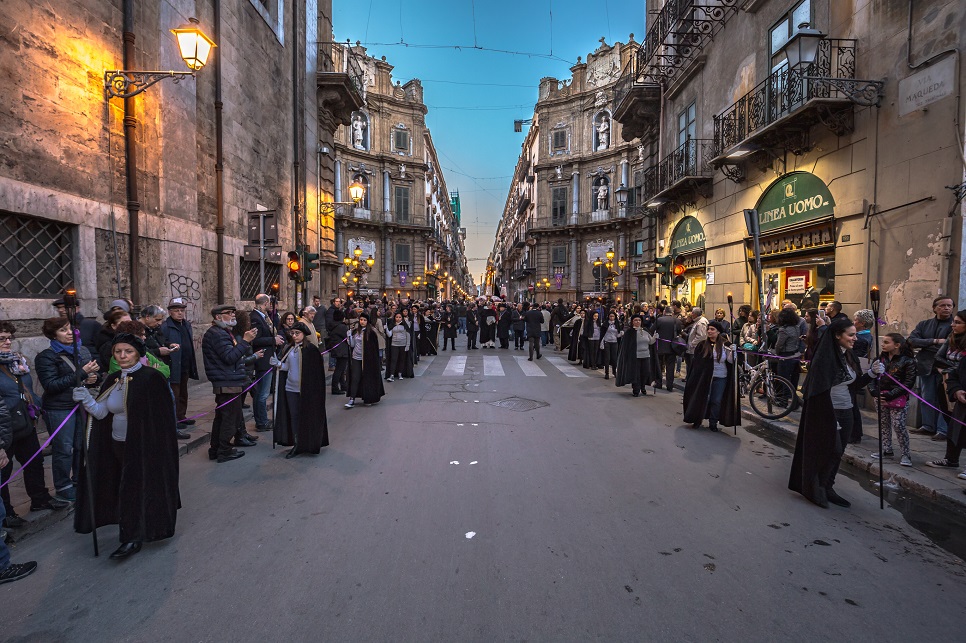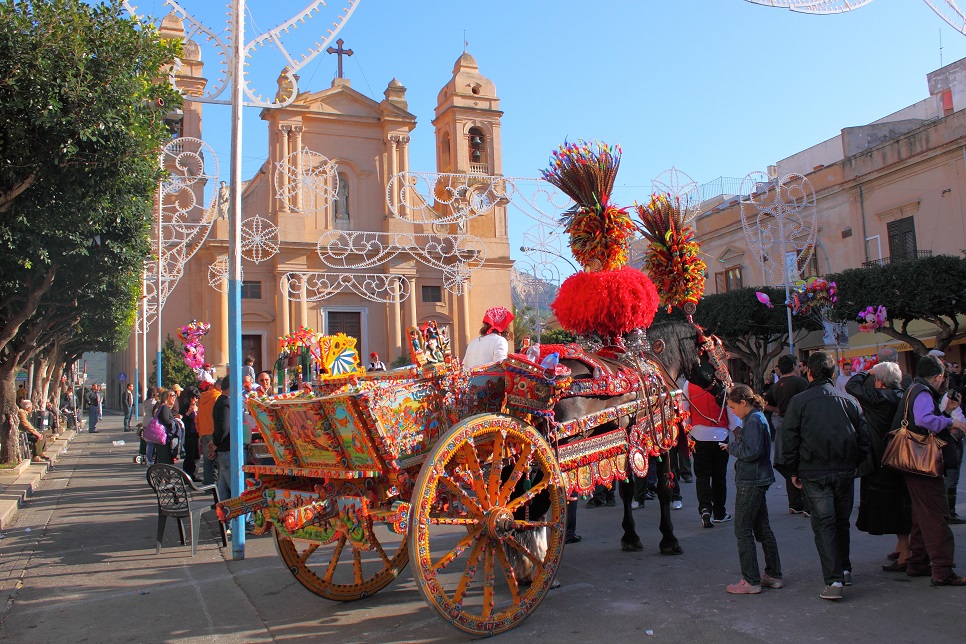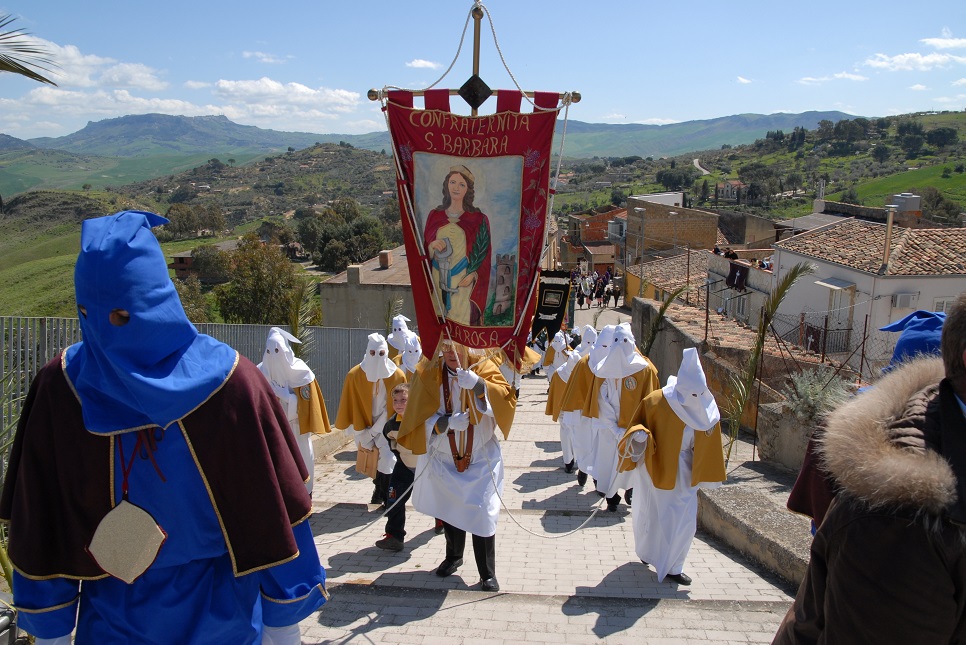Easter is one of the best times to visit Sicily. Temperatures are on the rise, plants and flowers are beginning to appear again and each town and village marks Holy Week with its own traditional event. Many of the processions are devoted to the Virgin’s desperate search for her child but others favour the dramatic struggle between good and evil.
Unsurprisingly, food plays a significant role in Easter festivities. This is the time for martorana, or pasta reale, the fruit-shaped marzipan that has become synonymous with Sicily, but marzipan ‘lambs’ also appear in the windows of local pasticcerie. The traditional dessert of cassata, made with sweetened ricotta, marzipan and candied fruit is also popular while cassatedde, a baked pastry tart with ricotta, sugar, egg and cinnamon is local to both Modica and nearby Ragusa.
These are just a few of the most atmospheric events on the island:
In Trapani, the Procession of the Mysteries has taken place every Good Friday for more than four hundred years. Involving a 2-mile procession of thousands of people, the 20 ‘Mysteries’ (sculptures made of canvas, wood and glue, representing the stages of the Passion and Death of Jesus) are carried on shoulders around the streets of the city.
Equally dramatic, events in the remote village of Prizzi in the hills south of Palermo include the Dance of the Devils, performed by villagers wearing large and terrifying iron masks, who, on Easter Sunday, rampage through the village in a traditional struggle between good and evil.
Easter at San Martino delle Scale, also near Palermo, is an altogether more soothing experience. Benedictine monks in the small village celebrate Easter and the coming of Spring on Easter Monday by freeing the birds they’ve saved from the harsh mountain winter, accompanied by concerts and Gregorian chants.
The Christian Orthodox Easter celebrated at Piana degli Albanesi near Palermo is a very colourful affair. Originating from Albania, the people of Piana have maintained many of their fascinating traditions throughout the centuries and on Palm Sunday, there is a procession through the street to mark Jesus’ arrival in Jerusalem. After mass on Easter Sunday, people don traditional 15th century costumes and hand out red hand-painted eggs.
Still in the west, Erice and Busetto Palazzolo have processions on Good Friday with the celebrations at Erice similar to those at Trapani.
In the heart of the island, Caltanissetta celebrates Easter on Holy Thursday with the Processione dei Misteri, a procession of holy statues made of chalk and terracotta, and representing the Passion of Jesus and stations of the way of the cross.
In the south east, the festival of Madonna Vasa Vasa in Modica is the most atmospheric event. The celebrations on Easter Sunday focus on the ‘Maronna Vasa Vasa’, a spectacular double procession along two routes in Modica which culminates in the meeting and greeting of the statues of the Virgin Mary and Christ, against a backdrop of pealing bells and soaring doves. Other processions take place at the neighbouring baroque towns of Noto, Ragusa Ibla and Scicli.
Sicily’s most unusual Easter event is at Terrasini to the west of Palermo, marked by the ancient tradition of La Festa degli Schietti. Celebrating the singles and unmarried of the village, single men take turns to lift an orange tree decorated with flags, red handkerchiefs, bells and little marzipan lambs, and weighing over 100lbs, to demonstrate their strength to single ladies. The ritual cutting down of the orange tree takes place at dawn on Holy Saturday followed by the event, fireworks and a procession of Sicilian carts, on Easter morning.
Easter in Sicily
Atmospheric rituals and age-old traditions
